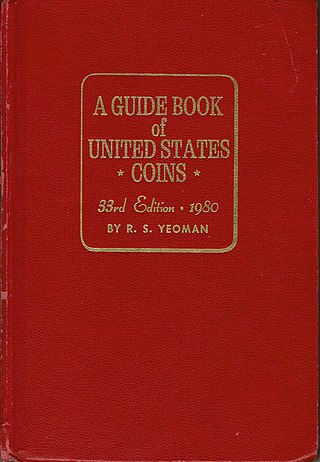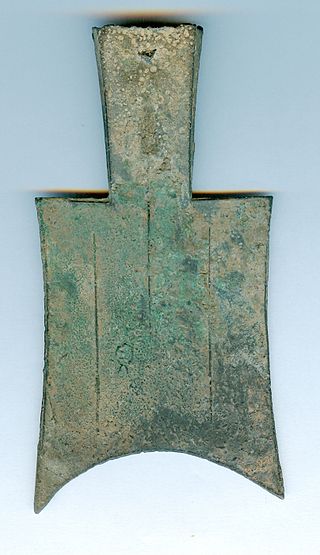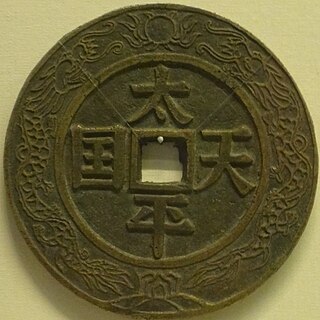
Coin collecting is the collecting of coins or other forms of minted legal tender. Coins of interest to collectors include beautiful, rare, and historically significant pieces. Collectors may be interested, for example, in complete sets of a particular design or denomination, coins that were in circulation for only a brief time, or coins with errors. Coin collecting can be differentiated from numismatics, in that the latter is the systematic study of currency as a whole, though the two disciplines are closely interlinked.

Stamp collecting is the collecting of postage stamps and related objects. It is an area of philately, which is the study of stamps. It has been one of the world's most popular hobbies since the late nineteenth century with the rapid growth of the postal service, as a stream of new stamps was produced by countries that sought to advertise their distinctiveness through their stamps.

The hobby of collecting includes seeking, locating, acquiring, organizing, cataloging, displaying, storing, and maintaining items that are of interest to an individual collector. Collections differ in a wide variety of respects, most obviously in the nature and scope of the objects contained, but also in purpose, presentation, and so forth. The range of possible subjects for a collection is practically unlimited, and collectors have realised a vast number of these possibilities in practice, although some are much more popular than others.

An auction catalog or auction catalogue is inventory of listing of items to be sold at an auction. It is made available some time before the auction date. Auction catalogs for rare and expensive items, such as art, books, jewelry, postage stamps, furniture, wine, cars, posters, published for sales around the world, can be of interest in themselves--they will can include detailed descriptions of the items, their provenance, historical significance, photographs, and even comparative analyses and descriptive essays by subject experts.

A stamp catalog is a catalog of postage stamp types with descriptions and prices.

Notaphily is the study and collection of paper currency, and banknotes. A notaphilist is a collector of banknotes or paper money, particularly as a hobby.

The Canadian fifty-cent coin is a Canadian coin worth 50 cents. The coin's reverse depicts the coat of arms of Canada. At the opening ceremonies for the Ottawa branch of the Royal Mint, held on January 2, 1908, Governor General Earl Grey struck the Dominion of Canada's first domestically produced coin. It was a silver fifty-cent coin bearing the effigy of King Edward VII.
Comic book price guides are typically published on a monthly, quarterly, or yearly basis and provide comprehensive information about the fluctuations in the resale value of comics over a specific duration. These guides play a crucial role for collectors who intend to sell their collection or require an estimate of their collection's value for insurance purposes.

A Guide Book of United States Coins (The Official Red Book), first compiled by R. S. Yeoman in 1946, is a price guide for coin collectors of coins of the United States dollar, commonly known as the Red Book.

Deltiology is the study and collection of postcards. The word originated in 1945 from the collaboration of Professor Rendell Rhoades (1914-1976) of Ohio and colleagues at Ohio State University. A biographical sketch of Dr. Rhoades life by his wife Nancy, was provided to the Canadian Friends (Quaker) Historical Association in 1994. Dr. Rhoades had responded to a contest by Editor Bob Hendricks in Post Card Collectors Magazine to create a more scholarly name for the hobby of postcard collecting. 'Philocartist' was a term used in the early 1900s, possibly coined by the noted early philatelist Fred Melville in his 1903 publication The A.B.C. of Stamp Collecting
The Canadian silver dollar was first issued by the Royal Canadian Mint in 1935 to commemorate the Silver Jubilee of King George V. The coin's reverse design was sculpted by Emanuel Hahn and portrays a voyageur and a person of Indigenous descent paddling a birch-bark canoe. The faint lines in the background represent the Northern Lights. The voyageur design was used on the dollar until 1986. It was then replaced with the 1987 Canadian 1-dollar coin. 1967 marked the end of the silver dollar as a business strike, or a coin issued for circulation. After 1967, the dollar coin was made of nickel, except for non-circulating commemorative issues for the collector market, which continue to contain silver.

Krause Publications, an American publisher of hobby magazines and books, was originally founded and based in Iola, Wisconsin. However, in April 2018, they relocated to Stevens Point, Wisconsin.

Quentin David Bowers is an American numismatist, author, and columnist. Beginning in 1952, Bowers’s contributions to numismatics have continued uninterrupted and unabated to the present day. He has been involved in the selling of rare coins since 1953 when he was a teenager.
The Standard Catalog of World Coins is a series of numismatic catalogs, commonly known as the Krause catalogs. They are published by Krause Publications, a division of Active Interest Media.

The Treasury Note was a type of representative money issued by the United States government from 1890 until 1893 under authority of the Sherman Silver Purchase Act in denominations of $1, $2, $5, $10, $20, $50, $100 and $1,000. It was issued in two series: an 1890 series with $1, $2, $5, $10, $20, $100 and $1,000 denominations, and an 1891 series that added the $50 denomination. A $500 note was designed but never issued.

The 1-yen coin is the smallest denomination of the Japanese yen currency. Historically they were initially made of both silver and gold in the early 1870s. Issues facing the Japanese government at the time included wanting to adopt the gold standard, and competing against the Mexican dollar for use in foreign trade. The decision was made to use silver one yen coins exclusively outside of Japan for trade, while gold coins were minted and used in mainland Japan. Gold and silver coins were eventually allowed to co-circulate in mainland Japan from 1878 to 1897 when they were demonetized. Millions of former one yen silver coins were countermarked by the Japanese government for use outside of the mainland. Silver one yen coins continued to be minted until 1914 for backing up currency.

Spade money was an early form of coin and commodity money used during the Zhou dynasty of China. Spade money was shaped like a spade or weeding tool, but the thin blade and small sizes of spade money indicate that it had no utilitarian function. The earlier versions of spade coins tended to have a fragile, hollow socket, reminiscent of a metal shovel. Later versions of spade money had this socket transformed into a thin, flat piece, and over time, inscriptions were added to the spade coins to mark their denominations. Several versions of spade money circulated across the Chinese Central Plains during the Zhou dynasty period until they were abolished by the Qin dynasty in 221 BC in favour of the Ban Liang cash coins.
Leopoldo Franciolini (1844–1920) was an Italian antique dealer who was active in the late 19th and early 20th centuries. He is remembered as a fraudster who sold faked and altered historical musical instruments. To this day his work is a barrier to the scholarly study of instruments of the past.
John J. Ford Jr. was an American numismatist from Hollywood, California, known for his extensive collection of historical currency and medals. Ford largely collected American coinage, particularly U.S. colonial coins, medals, and obsolete U.S. and colonial currency. Ford was one of the premier experts in the field of numismatics, and it is estimated that the total value of his numismatic holdings was upwards of $55 million at the time of his death.

The currency of the Taiping Heavenly Kingdom consisted of Chinese cash coins and paper money, although the rarity of surviving Taiping paper money suggests that not much was produced. The first cash coins of the Taiping Heavenly Kingdom were issued in the year 1853 in the capital of Tianjing. The cash coins of the Taiping Heavenly Kingdom should not be confused with the Taiping Tongbao (太平通寳) which was issued during the Northern Song dynasty between the years 976 and 997, or with any other contemporary rebel coinage that also bear this inscription.















